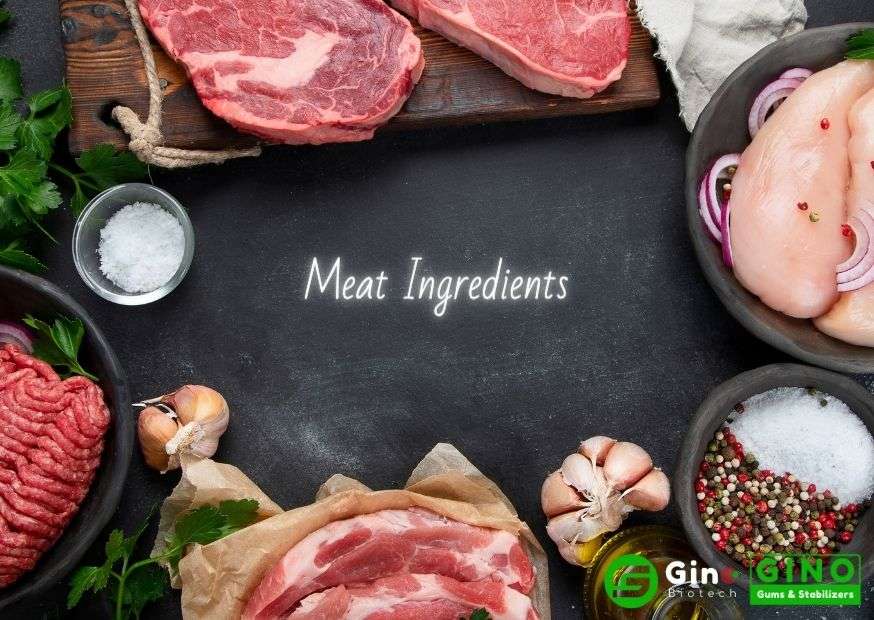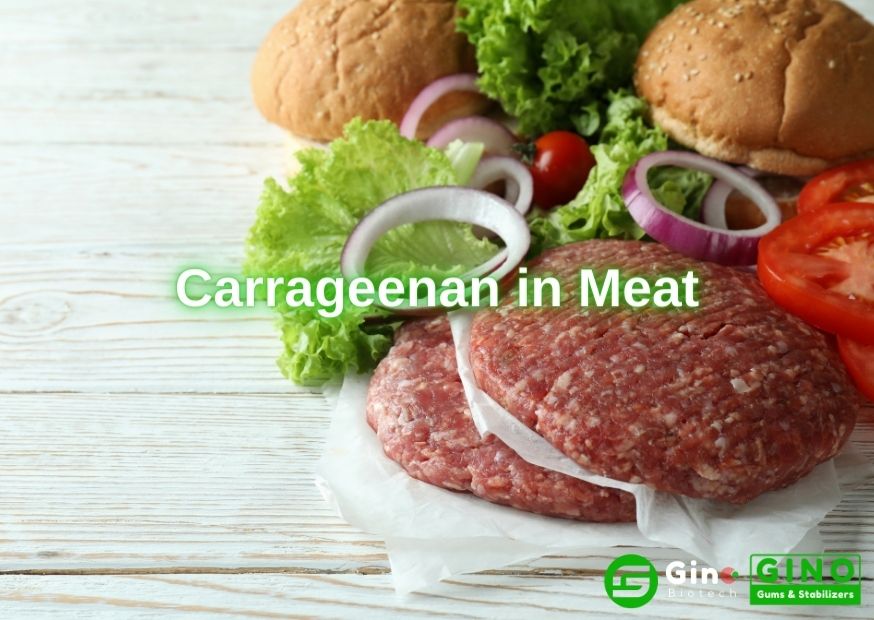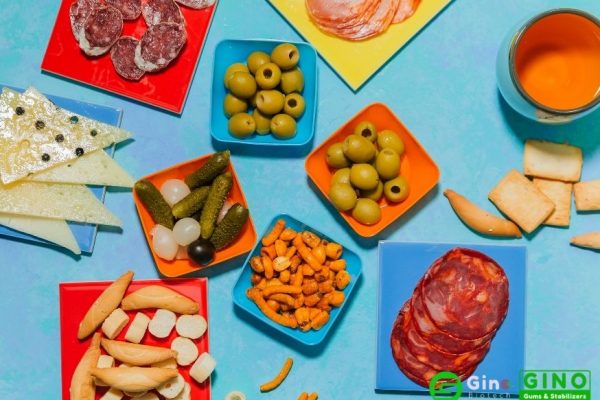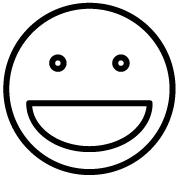Meat Ingredients | Carrageenan in Meat | Why Meat Products with Carrageenan Taste Better
Meat Ingredients | Carrageenan in Meat
Abstract
The widespread use of food gums has brought more experience to our taste buds. Carrageenan and meat products are a perfect match. This article will introduce you to more information about carrageenan in meat and other meat ingredients.

Carrageenan in Meat
What is the water retention of meat? When meat products are subjected to external forces, such as pressure, heating, chopping, freezing, thawing, curing and other processing or storage conditions, their ability to retain their original moisture and added moisture.
Among them, the reasonable use of food additives in the curing process to improve the water retention of meat products has been an important issue in meat processing.
For example, adding the right amount of carrageenan in the curing or processing of meat products can improve the water retention of meat products and increase the taste of meat products.
In addition to carrageenan, common water retention and binders include table salt, phosphate, soy protein, starch, sodium caseinate, etc.

1. Carrageenan
Carrageenan is used as a gelling agent in meat processing because of its strong viscosity and better physical and chemical properties such as solubility and coagulability.
When carrageenan is added into meat products, it will combine with water to form a hard colloid immediately after heating, forming a stable network structure.
It can effectively enhance the water retention of meat, improve the elasticity and slicing performance of products, thus improving product quality and reducing costs.
At the same time, to avoid sinking of carrageenan, it should be constantly stirred to make it dispersed.
2. Salt
When the salt reaches a certain concentration, it has the effect of enhancing the water retention of meat products.
Tests show that when the salt content is 4.6%-5.8%, the water retention is the strongest.
Usually the salt content in meat products is about 3%, the reduction of salt content will lead to a decline in water retention, in order to maintain the water retention of meat products, it is necessary to add polyphosphates and other water retention agents.
3. Phosphate
Phosphate is currently the most widely used in meat processing, but also the most effective moisture retention agent, it has a significant synergistic effect with salt.
The phosphates commonly used in meat processing are.
Sodium tripolyphosphate, sodium pyrophosphate, sodium hexametaphosphate, disodium dihydrogen pyrophosphate, potassium pyrophosphate, potassium tripolyphosphate and compound phosphate.
4. Soy Protein
The addition of exogenous proteins during the curing or processing of meat can improve water retention, the most common exogenous protein is soy protein.
Soy protein isolate has good dispersibility and solubility, and is most suitable for preparing protein brine. The amount of soybean isolate protein added should be controlled within 10%, preferably at about 5%.
5. Starch ( Modified Starch )
Starch is the most commonly used thickener and gelling agent in the processing of meat products.
Adding starch has a good effect on the water retention of meat products, which is due to the close combination of water molecules in the net structure of muscle protein denaturation after starch paste occurs when heated, and starch paste becomes soft and elastic, which plays the dual effect of adhesion and water retention.
The amount of starch added should be controlled within 5%, too much added starch will reduce the quality of meat products.
6. Sodium Caseinate
Sodium caseinate has a strong emulsification and thickening effect, and is used in meat processing to enhance the retention of fat and water, prevent dehydration and shrinkage, and improve the texture and taste of the products, and the addition amount is generally 1.5%-2%.
All the above meat ingredients have water retention effect, can be used alone, but a lot of practice shows that mixed use is better than used alone.
When using meat ingredients, we should choose suitable water retention, binder type and addition amount according to the type of meat products, texture requirements, raw materials, production costs and other factors, combined with the characteristics of various additives.
Compound use of salt, compound phosphate and various thickening and gelling agents is an effective way to improve the water retention of meat products.

Recent Posts

We are a biotech company specialized in the research, development and commercialization of innovative and technological food additives hydrocolloids Agar Agar, Carrageenan and Tailor-Made Stabilizer Solutions.
With the extended know-how and experience in the research, application and use of Hydrocolloids, we could provide one-stop-shop customized solutions perfectly matched to the needs of our customers.
Our products cover the needs of the Meat, Dairy, Bakery, Confectionery and other industrial sectors.













